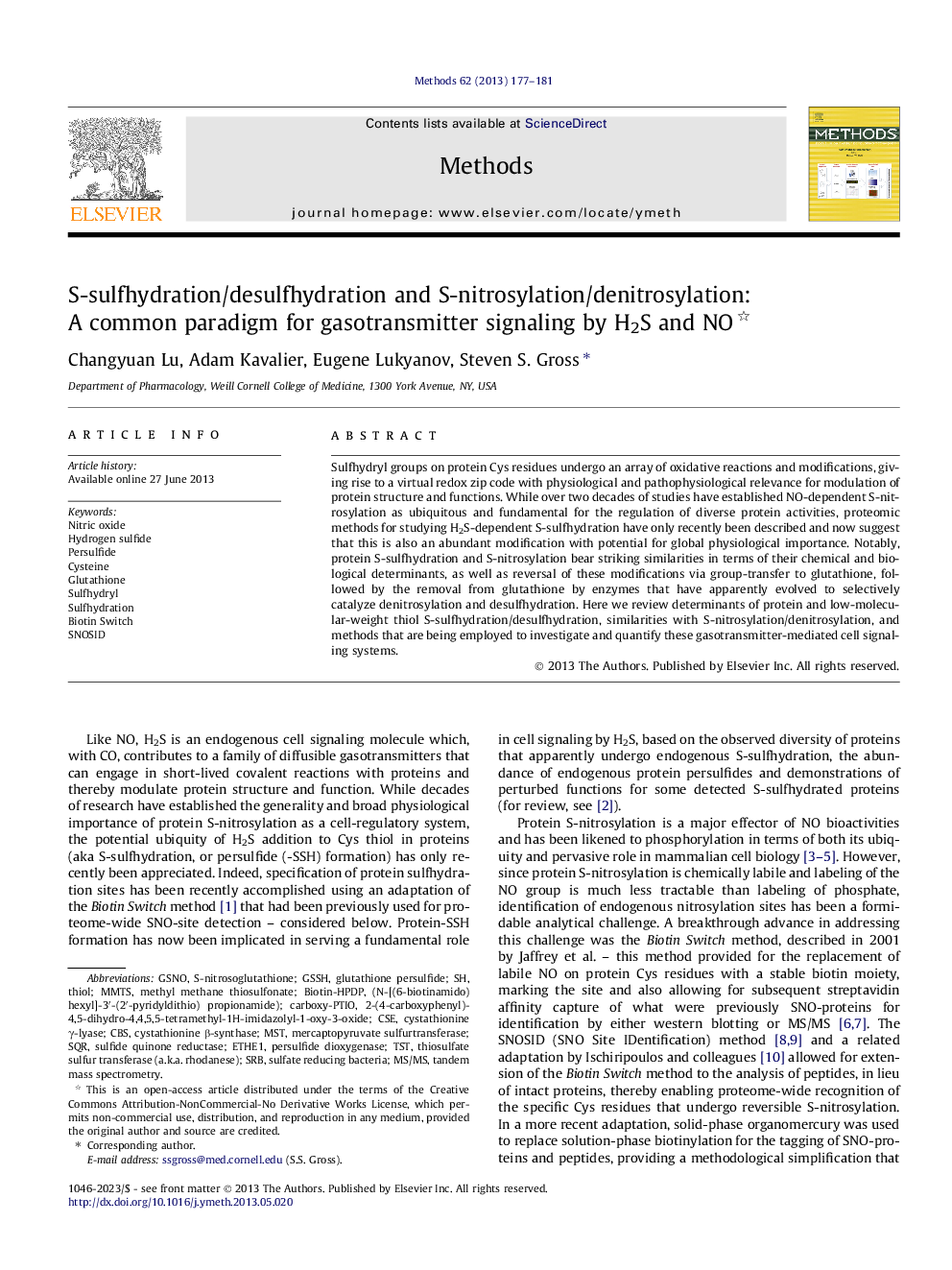| Article ID | Journal | Published Year | Pages | File Type |
|---|---|---|---|---|
| 10825887 | Methods | 2013 | 5 Pages |
Abstract
Sulfhydryl groups on protein Cys residues undergo an array of oxidative reactions and modifications, giving rise to a virtual redox zip code with physiological and pathophysiological relevance for modulation of protein structure and functions. While over two decades of studies have established NO-dependent S-nitrosylation as ubiquitous and fundamental for the regulation of diverse protein activities, proteomic methods for studying H2S-dependent S-sulfhydration have only recently been described and now suggest that this is also an abundant modification with potential for global physiological importance. Notably, protein S-sulfhydration and S-nitrosylation bear striking similarities in terms of their chemical and biological determinants, as well as reversal of these modifications via group-transfer to glutathione, followed by the removal from glutathione by enzymes that have apparently evolved to selectively catalyze denitrosylation and desulfhydration. Here we review determinants of protein and low-molecular-weight thiol S-sulfhydration/desulfhydration, similarities with S-nitrosylation/denitrosylation, and methods that are being employed to investigate and quantify these gasotransmitter-mediated cell signaling systems.
Keywords
SQRGSNOS-nitrosoglutathioneCBSTSTGSSHBiotin-HPDPMercaptopyruvate sulfurtransferaseSRBCSEETHE1PersulfideMSTMMTScystathionine γ-lyaseMS/MSThiolBiotin switchSulfhydrationSulfate reducing bacteriaHydrogen sulfidesulfhydrylCysteinecystathionine β-synthaseTandem mass spectrometryNitric oxideCarboxy-PTIOGlutathione
Related Topics
Life Sciences
Biochemistry, Genetics and Molecular Biology
Biochemistry
Authors
Changyuan Lu, Adam Kavalier, Eugene Lukyanov, Steven S. Gross,
